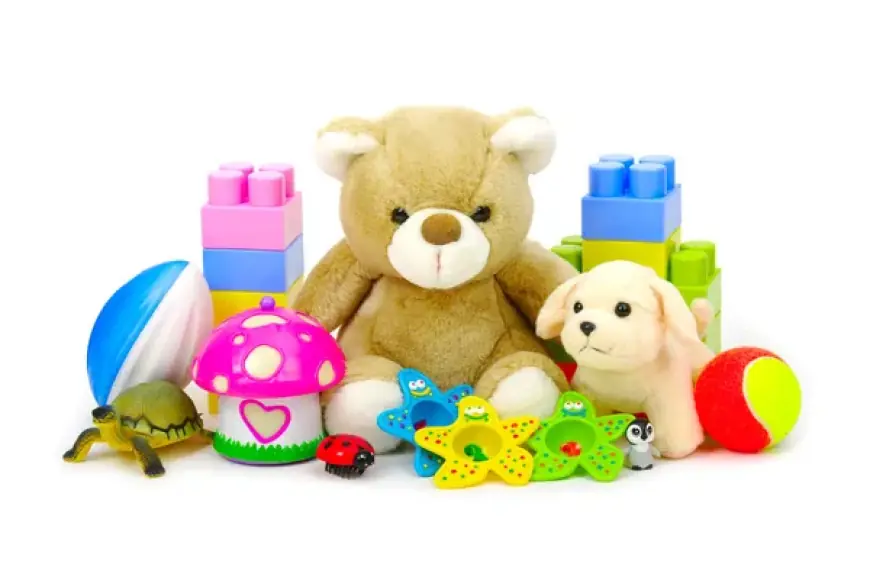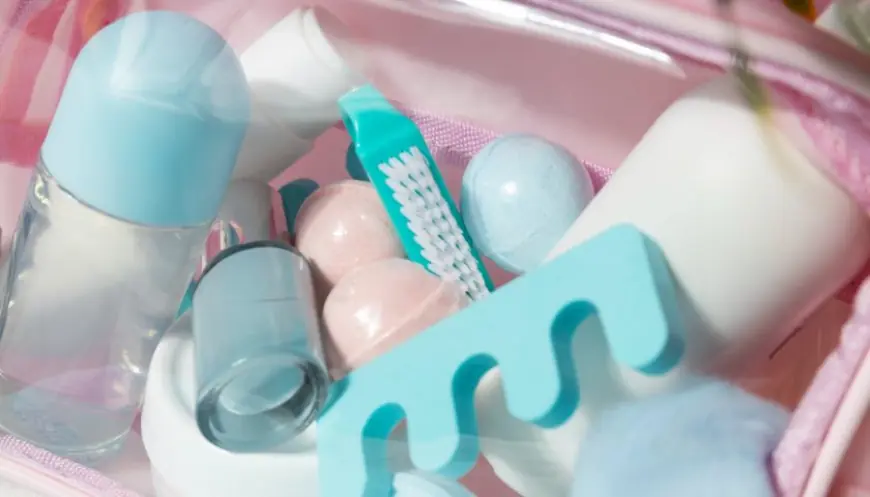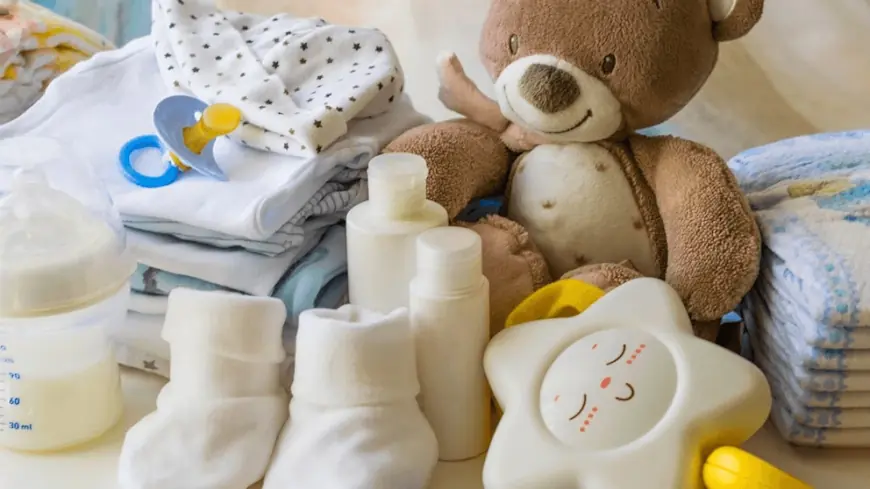The Wonderful World of Toys for Babies: A Guide to Safe and Engaging Play

Toys for babies are more than just playthings; they are essential tools that spark curiosity, foster development, and bring joy to the earliest stages of life. From the moment a baby begins to explore the world, toys play a critical role in stimulating their senses, encouraging motor skills, and nurturing cognitive growth. Choosing the right toys for babies can feel overwhelming for parents, with countless options lining store shelves and online marketplaces. However, understanding what makes a toy safe, age-appropriate, and developmentally beneficial can make the selection process both exciting and rewarding.
Why Toys Matter for Babies
Babies are natural explorers, and toys provide a gateway to discovery. Through play, infants develop essential skills that form the foundation for future learning. Toys engage a baby’s senses—sight, sound, touch, and sometimes even taste—helping them make sense of their environment. For example, a brightly colored rattle not only catches a baby’s eye but also introduces them to cause and effect as they shake it and hear a sound. Similarly, soft plush toys offer comfort and tactile stimulation, while stacking blocks encourage problem-solving and fine motor skills.
Play is a baby’s work, and toys are the tools that make this work possible. According to pediatric experts, play supports cognitive, physical, and emotional development. It fosters creativity, builds hand-eye coordination, and even lays the groundwork for language and social skills. For instance, when a baby manipulates a toy, they’re not just having fun—they’re learning how their actions produce results, a concept that underpins problem-solving and critical thinking later in life.
Choosing Age-Appropriate Toys

Babies grow and develop at a rapid pace, and their toy preferences evolve just as quickly. Selecting toys that align with a baby’s developmental stage ensures they remain engaged and challenged without frustration. Below is a breakdown of toy types suitable for different age groups in the first year of life.
0–3 Months: Sensory Exploration
In the first three months, babies are beginning to focus their vision, track moving objects, and respond to sounds. Toys for this age group should stimulate the senses without overwhelming the baby. High-contrast toys, such as black-and-white mobiles or cards, are ideal because newborns see high-contrast patterns best. Soft rattles with gentle sounds or textured fabrics introduce auditory and tactile stimulation. Hanging toys above a crib or play mat encourage babies to reach and kick, promoting early motor skills.
Safety is paramount at this stage. Ensure toys are lightweight, free of small parts, and made from non-toxic materials, as babies may put them in their mouths. A soft, washable toy with no sharp edges is perfect for this age.
3–6 Months: Grasping and Interaction
By three to six months, babies are gaining better control over their hands and are eager to grasp and explore objects. Teething toys, such as silicone rings or soft rubber shapes, are excellent for soothing sore gums while encouraging babies to practice gripping. Activity gyms with hanging toys provide opportunities for batting and grabbing, fostering hand-eye coordination. Mirrors are also a hit at this stage, as babies love to gaze at their reflections, which supports self-awareness.
Look for toys that are easy to hold and made of safe, BPA-free materials. Bright colors and varied textures add to the sensory experience, keeping babies engaged.
6–12 Months: Exploration and Problem-Solving
Between six and twelve months, babies become more mobile, often crawling or taking their first steps. Toys that encourage movement, such as push-and-pull toys or balls, are great for developing gross motor skills. Stacking cups, shape sorters, and simple puzzles introduce problem-solving and fine motor skills. Musical toys, like mini drums or xylophones, delight babies while fostering an early appreciation for rhythm and sound.
At this stage, babies are also beginning to imitate adults, so toys that mimic everyday objects—like toy phones or plastic keys—can be especially engaging. Always ensure these toys are sturdy and free of choking hazards, as babies are prone to exploring with their mouths.
Safety First: What to Look For
When selecting toys for babies, safety is non-negotiable. Babies explore the world orally, so toys must be free of small parts that could pose a choking risk. The U.S. Consumer Product Safety Commission (CPSC) recommends checking for toys with the ASTM F963 label, which indicates compliance with safety standards. Avoid toys with sharp edges, loose components, or toxic materials like lead-based paint or phthalates.
For younger babies, soft toys made of fabric or silicone are safer than hard plastics. Always check for sturdy construction—seams should be secure, and battery-operated toys should have tightly fastened compartments. Washable toys are a must, as babies frequently drool or spit up. Regularly inspect toys for wear and tear, and discard any that are damaged.
Age labeling is another critical factor. Toys marked “0+” or “3+ months” are designed with specific developmental stages in mind. Ignoring these guidelines could lead to frustration or safety risks. For example, a toy meant for a toddler may have small parts unsuitable for a six-month-old.
The Role of Open-Ended Toys
Open-ended toys, which can be used in multiple ways, are particularly valuable for babies. Unlike toys with a single purpose, open-ended toys encourage creativity and adaptability. For example, a set of wooden blocks can be stacked, sorted, or used to create imaginary structures, growing with the baby’s abilities. Fabric books with crinkly pages or lift-the-flap features engage babies while promoting early literacy.
These toys also foster independent play, which is crucial for building confidence and problem-solving skills. A basket of open-ended toys—like stacking rings, soft balls, and textured scarves—can keep a baby entertained for hours while stimulating their imagination.
Balancing Screen Time and Traditional Toys
In today’s digital age, many toys incorporate screens or electronic features. While these can be engaging, pediatricians, including those from the American Academy of Pediatrics, recommend limiting screen time for babies under 18 months to video chats with family. Traditional toys, such as wooden blocks or plush animals, offer tactile and sensory experiences that screens cannot replicate. They also encourage active participation rather than passive consumption, which is vital for brain development.
If you choose electronic toys, opt for those with simple, interactive features, like a toy that plays music when a button is pressed. Ensure the volume is low to protect delicate ears, and always supervise play to prevent overstimulation.
Sustainable and Eco-Friendly Options
As parents become more environmentally conscious, the demand for sustainable toys has grown. Eco-friendly toys for babies, made from organic cotton, natural wood, or recycled materials, are both safe and environmentally responsible. Brands like PlanToys and Green Toys offer durable, non-toxic options that prioritize sustainability without sacrificing fun. These toys often have a timeless quality, making them heirlooms that can be passed down to future siblings or generations.

When choosing sustainable toys, check for certifications like FSC (Forest Stewardship Council) for wooden toys or GOTS (Global Organic Textile Standard) for fabric-based toys. These ensure the materials are responsibly sourced and free of harmful chemicals.
Tips for Parents: Building a Toy Collection
Creating a well-rounded toy collection doesn’t require a big budget. Start with a few versatile, high-quality toys that can grow with your baby. Rotate toys every few weeks to keep playtime fresh and prevent overstimulation. A simple storage bin can hold a curated selection, making it easy to swap items in and out.
Involve your baby in the selection process as they grow. Notice what captures their attention—do they love bright colors, sounds, or textures? Tailor your choices to their preferences while ensuring developmental benefits. Secondhand stores and toy libraries are also great options for finding affordable, gently used toys.
Finally, don’t underestimate the power of everyday objects. A wooden spoon, a soft scarf, or a cardboard box can be just as engaging as a store-bought toy. Supervised play with household items can spark creativity and provide endless entertainment.
Conclusion
Toys for babies are far more than mere distractions—they are vital tools for learning, growth, and joy. By choosing safe, age-appropriate, and engaging toys, parents can support their baby’s development while creating cherished moments of play. From rattles and stacking cups to eco-friendly blocks, the right toys can ignite a baby’s curiosity and lay the foundation for a lifetime of learning. With careful selection and a focus on safety and quality, you can build a collection of toys that will delight your baby and make every playtime a new adventure.
What's Your Reaction?
 Like
0
Like
0
 Dislike
0
Dislike
0
 Love
0
Love
0
 Funny
0
Funny
0
 Angry
0
Angry
0
 Sad
0
Sad
0
 Wow
0
Wow
0


















































